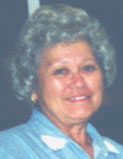-
Hula Recollections ofEloise Punanakamanuihaili Kanoa WaiteMarch 6, 1999

As far as I can remember, I always wanted to be a hula dancer. 1938, at age 7, my mother sent me to Tom Hiona to learn the hula. Known in Maui as the best hula teacher, his reputation preceded him, when he re-located to Honolulu, about 1936. He set up classes in a little cottage on Queen Emma street, between Central Intermediate School and Royal School, where he lived with his wife, Clara. He did not take students younger than 6 years, but my mother explained to him that she worked and I had to care for my younger sister, age 3. He agreed to allow my younger sister to come with me, if she was not disruptive. There, she was banished to the last row and allowed to mimic the students. The first 3 months we learned basic hula steps and fundamental hula motions. He never raised his voice or scolded us. If we did not execute the steps (ami, uwehe, kalakaua, etc.) correctly, we had to do the steps 50 times to the right and 50 times to the left. We spent a lot of time doing our hundred hula steps. When he felt we were ready to learn our first hula, we would sit in a circle around him and he would explain the meaning, the background, the motions, steps and ancient legends relevant to the dance. He did this with all of the hulas he taught; the most interesting aspect, to me. When we were teen-agers, he would tell the kaona of the dance, which really was the true meaning. At that point, we would then understand why a particular motion or movement was made in a certain way. His method of teaching was to be sure the dancer understood the hula and could express it in the proper way. I made my uniki at the Halekulani Hotel, age 8 or 9, by doing 3 solos; 1 pahu, 1 olapa, 1 auana (Holoholo Kaa). There was no big ceremony or ritual, just a private prayer. We were not given a palapala (certificate) to commemorate the event; we were given a gift later, that may have been prophetic in nature. I was presented with a pair of kalaaus that Tom made and carved himself. In kapu hula, the kalaaus were always carved with a tiki. If you notice the picture, you will see that the carving is plain, with no tiki. He did not believe in the old Hawaiian religion, he was Christian, and tried always to protect his dancers. He believed that the old religion was too harsh and constantly warned us about those he thought would try and lead us back to paganism. The kapu hula we learned was always taught in its entirety, but we very seldom performed the whole dance in public. He knew the whole dance was prayer and cut the parts that were very deep. He was criticized for this action which caused much friction between him and other kumus, some of whom later, became his adversaries. Some thought that he should pass on the whole dance, but he felt it would not be wise if future teachers did not understand the full implications and did not know how to protect themselves and their students. In 1947-48, in a ho`okohu (to commission) prayer, he presented me with a canoe that he also made. Reflecting on this gift, I suppose it meant that someday I would leave (never thought I would ever leave home) and eventually teach hula. I left Hawaii in 1950 to attend Woodbury College in Los Angeles. I was able to pay for my education by dancing hula in California and Las Vegas. In the 1960's, I did open Lovely Hula Studio in Santa Barbara. There, I taught only Hula Auana remembering that Tom did not want us to teach pahu hula until he could remove all of the kapus by his death.
Aloha Tom Hiona, the kindest and the best hula teacher.


Kalaau - made by Tom Hiona

Canoe made by Tom Hiona
Question: Who were your other hula teachers?
Answer: Tom was my only teacher. If you were one of Tom`s dancers, you were welcomed in any hula studio. Incidentally, back then we were called hula studios, not hula halaus. It was the same with dancers from other teachers like Rose Joshua, Alice Keawekane, Lena Guerrero, Kaui Zuttermeister, etc. The hula community back then was very cohesive. We did not compete against each other; we danced with and for each other. I remember one Aloha Week Festival at Ala Moana Park where dancers from different studios performed under the direction of Alice Keawekane. I think we did Aua Ia I Hela or Kaulilua. I also danced with Bill Aliiloa Lincoln, Joseph Kahaulelio, Kent Ghirard, among others. In those days, hula jobs were plentiful, especially during World War II, and when Tom had a committment, he would call the other hula studios to see if they could take the jobs and vice versa.